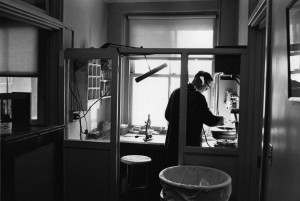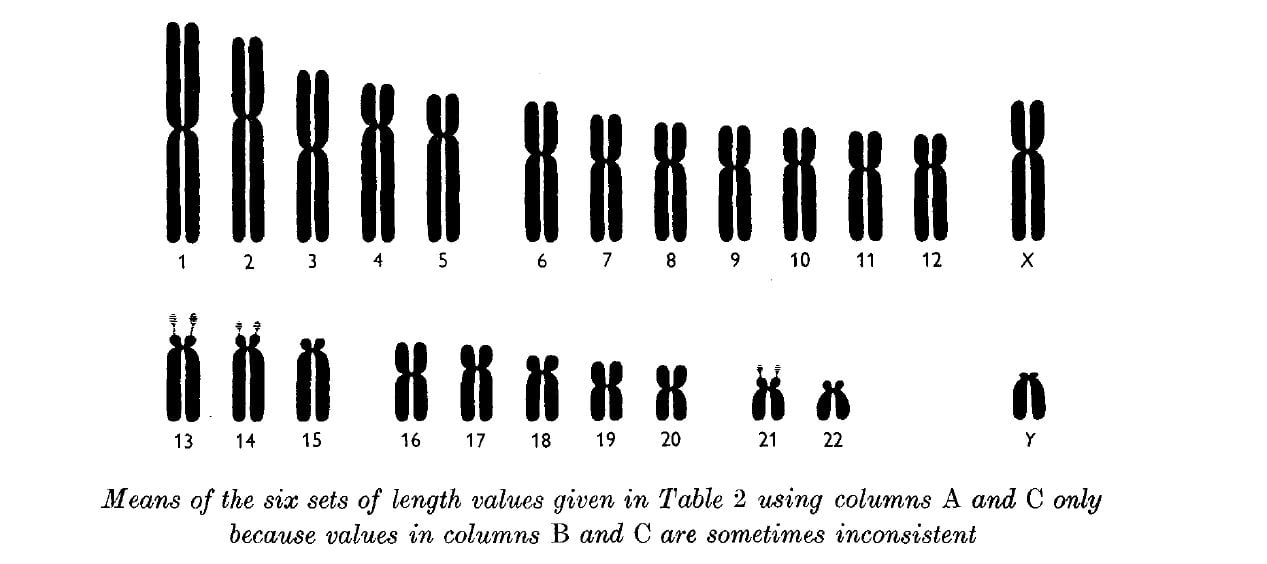It’s February 29, the birthday of the great pediatrician and medical geneticist Barton Childs. Born in 1916, he would have had 24 candles on his cake today.
Childs was adopted as a baby. An irony for a medical geneticist, he told me, “Because I have no family history,” no pedigree to check for inherited traits. He graduated from Williams College and enrolled at Johns Hopkins medical school in 1938. He served in World War II and then returned to Hopkins, joining the medical faculty in pediatrics.
Pediatrics has a venerable place in the history of medical genetics. Childs was intrigued by young patients with congenital anomalies and began to read up on genetics. A formative moment in his career came in 1952, when he took a fellowship at the Galton Laboratory of Eugenics (later, Human Genetics), at University College London. There he studied under Lionel Penrose and worked with Harry Harris, two pioneers of the field. Penrose was a psychiatrist interested in mental deficiency—his 1938 Colchester Study was a landmark in the understanding of diseases such as phenylketonuria and Down syndrome. Harris was interested in genetic polymorphism. Newly available techniques, such as protein sequencing, electrophoresis, and chromatography enabled him to identify biochemical idiosyncrasies and variations. Both Penrose and Harris were devotees of Archibald Garrod, the English physician who developed the concepts of biochemical individuality and inborn errors of metabolism—two ideas central to genetic medicine today.
Harris and Penrose showed Childs the Garrodian light. He had a scientific temperament, and back in Baltimore he set up a Drosophila laboratory in the hospital to study genetic mechanisms. He contributed to early understanding of numerous genetic diseases, including G6PD deficiency, congenital adrenal hyperplasia and others. He took a particular interest in diseases of the X chromosome, which have a characteristic pattern on a pedigree. In the 1970s he participated in debates over genetic screening and counseling, arguing in favor of proceeding with caution and an eye toward respecting patients’ rights and autonomy.

But his most important contributions were his steady, articulate advocacy of the importance of genetics for medicine. Like his mentor Harris, Childs’s passion was variation. He was not interested in finding “the gene for” a disease; he wanted to understand how our genes contribute to variability in disease. What is it that makes us each biochemically and genetically unique? In particular, he was interested in bringing an understanding of the principles of genetics and evolution into medical education. He was fascinated by the challenge of molding physicians’ minds as the most potent way to improve medical care. By influencing how doctors think, he believed, one could have the largest possible effect on how patients are treated.
His 1999 book Genetic Medicine: A Logic of Disease is his magnum opus. In it, he frames disease as a deviation from the norm of health and asks, How did the normal become the norm? How and why do people vary? Can we identify a set of principles for understanding the mechanisms of disease, and can we develop a structured argument that can be taught to medical students? “To be comprehensible, a logic of disease requires a language common to biology, medicine, and other disciplines. In fact, there is such a language: that of the DNA.” Childs saw molecular genetics as the foundation of the life sciences, the principles on which all life is founded. Drawing on a mechanistic tradition reaching back to Claude Bernard, Childs articulated medicine as an expression of science. Science, in this view, describes the normal, and medicine the pathological, which is a deviation from the norm. Childs was not a simplistic genetic determinist, though. He understood that both health and disease result from the interplay of genetics and environment—an interplay that was unique to the individual and shifted through time. Though his intellect was austere and philosophical, his intent was always to improve medical care for the individual patient.
Childs’s commitment to theory as a guide to practice came from and contributed to a self-effacing personal style. He refused to discuss any personal matters with interviewers, insisting, for example, that nothing about his life was relevant to his ideas. This is a curious stance for a physician, whose first gesture with a new patient is to take a history. He could be gruff and curt, but his curmudgeonly exterior covered a gentle demeanor and a light ego. Seeking a portrait of him to use in my forthcoming book on medical genetics, I scoured the Chesney Medical Archives almost in vain. The only view of his face the archivists and I could find was a three-quarters view image of him talking with colleagues. I settled instead on a silhouette that for me evokes his independence and austerity.
His principal legacy is as he would have wanted it: in the medical curriculum. When Johns Hopkins reformed its curriculum in the 1990s, they grounded it on Childs’s biological approach to medical individuality. Administrators and faculty consulted with Childs, tooling up on his erudite and rich framing of medical education in genetic terms. The course “Genes to Society” is the keystone of the new curriculum, and is explicitly based on Childs’s “logic of disease.” In it, Garrodian individuality, polymorphism, and personalized medicine find pedagogical expression. They put molecular principles up front, using them to then characterize higher organ systems and environmental interactions. In contrast to traditional curricula, in which basic science is taught in the first two years and clinical exposure is in the last two years, the Genes to Society program introduces students to the clinic from the beginning, in an effort to convey the dynamic relationship between the normal and the pathological.
So raise a glass to Barton Childs on his twenty-fourth birthday—a fitting day for one so interested in human idiosyncrasy.
Selected bibliography:
Childs, Barton, and James B. Sidbury, Jr. “A Survey of Genetics as It Applies to Problems in Medicine.” Pediatrics 20, no. 1 (1957): 177-216.
Childs, Barton, and William J. Young. “Genetic Variations in Man.” American Journal of Medicine 34, no. May, 1963 (1963): 663-73.
Childs, Barton. “Sir Archibald Garrod’s Conception of Chemical Individuality: A Modern Appreciation.” N Engl J Med 282, no. 2 (1970): 71-77.
Childs, B., C. Scriver, and et al. Genetic Screening: Programs, Principles and Research. Washington, DC: National Academy of Sciences, 1975.
Childs, B. “Genetics in Medical Education.” Am J Hum Genet 52, no. 1 (1993): 225-7.
———. “A Logic of Disease.” Lipids 31 Suppl (1996): S3-6.
Childs, B., and R. S. Spielman. “Harry Harris (1919-94): In Memoriam.” Am J Hum Genet 58, no. 4 (1996): 896-8.
Childs, Barton. Genetic Medicine: A Logic of Disease. Baltimore: Johns Hopkins University Press, 1999.
Childs, B., C. Wiener, and D. Valle. “A Science of the Individual: Implications for a Medical School Curriculum.” Annu Rev Genomics Hum Genet 6 (2005): 313-30.

You must be logged in to post a comment.